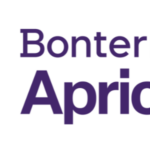
6 Steps To Organizing a Successful Charity Walk Fundraiser
April 30, 2025
[PODCAST] Maximizing Volunteer Impact: Communication Strategies for Retention – Eric Burger
May 2, 20258 Ways Smart Nonprofits Use Business Strategy to Win

8 Ways Smart Nonprofits Use Business Strategy to Win shows how your organization can apply proven for-profit tactics to grow, operate more efficiently, and expand your impact.
Major gift fundraising has always been part art, part intuition. But in an era where donor expectations are higher and attention spans shorter, instinct alone doesn’t cut it. The most successful nonprofits aren’t just doubling down on mission—they’re refining the way they communicate, borrowing lessons from the business world to do it. Because when the stakes are six or seven figures, how you say something can matter just as much as what you’re saying.
1. Shift the Conversation from Giving to Partnership
If you treat a major donor like a checkbook, they’ll act like one—and close themselves just as fast. Business relationships thrive on mutual value, and major donors are no different. When you reframe the conversation around partnership rather than patronage, you invite them to see themselves as collaborators in a larger mission. This subtle but powerful pivot in language opens up longer, deeper conversations and helps donors feel the gravity of their role.
2. Bring the Metrics, But Make Them Matter
Data might not seem like a natural fit in a nonprofit’s emotionally driven world, but the best business communicators know numbers don’t kill stories—they clarify them. A donor who gives six figures doesn’t just want a thank-you card; they want to understand what their money made possible. You need to package impact like a quarterly report: clean, honest, and grounded in outcomes. That doesn’t mean throwing spreadsheets at people. It means telling them what changed, who benefited, and how things improved—without fluff.
3. Keep the Message Consistent Across Channels
In business, brand voice is sacrosanct. Every memo, pitch, or customer touchpoint carries the same tone and intention. Nonprofits often suffer from a fractured narrative: one voice in the newsletter, another in the gala speech, and yet another in direct appeals. Major donors pick up on this, consciously or not. To build confidence and familiarity, you need to speak with one voice across every channel—a voice that sounds like your mission would if it could talk.
4. Know When to Talk—and When to Listen
Too many fundraisers lean into the monologue, armed with polished pitches and PowerPoint decks. But in the business world, successful executives spend just as much time asking smart questions as they do answering them. Donors come with perspectives, ideas, and lived experiences that can enrich your mission—if you let them. The best communicators in any sector know that listening isn’t just polite; it’s strategic. Show you value your donor’s brain, not just their wallet.
5. Use Internal Communication to Sharpen External Messaging
Before a word goes out to donors, it echoes through hallways and Zoom rooms. Nonprofits that borrow from business comms best practices ensure that staff, board members, and volunteers all know how to talk about the organization in ways that are aligned, persuasive, and clear. Internal briefings, messaging guides, and even role-playing exercises used by sales teams can equip nonprofit staff to be sharper and more confident fundraisers. Because every touchpoint is a chance to reinforce—or dilute—your message.
6. Sharpen Strategy Through Self-Paced Learning
Enrolling in online business courses is a smart way to build out your business management skills without stepping away from the work that matters most. These programs are designed with real-world application in mind, often placing a premium on leadership development and communication techniques that directly translate to donor relations. By learning how to frame messages that resonate and build trust, you’ll be better positioned to connect with major supporters in a way that feels authentic and strategic.
7. Speak Like a Person, Not a Brochure
Here’s where some nonprofits slip. In trying to sound “professional,” they end up sounding generic. Major gift donors have usually seen enough templated asks to last a lifetime. You want to speak with the polish of a professional and the heart of a friend. Business leaders know that authenticity isn’t optional anymore—it’s currency. Write and speak like someone who knows the stakes and still dares to sound human. Avoid overused buzzwords, cut the jargon, and say it like you mean it.
8. Create Feedback Loops, Not Just Follow-Ups
It’s easy to treat donor stewardship as a one-way street: send a report, make a call, invite them to an event. But businesses live and die by feedback loops. They test, revise, listen, and improve. Nonprofits should take the same approach. Ask donors what resonated. What fell flat. What they wish they heard more—or less—about. When you incorporate this feedback into your next communication, it doesn’t just improve your approach. It shows your donors they’re shaping the future with you.
At its core, major gift fundraising is about connection. It’s about translating belief into action, and hope into tangible, sustained support. Business communication strategies—when adapted thoughtfully—can elevate those connections beyond the transactional and into something transformational. These strategies aren’t just about being more persuasive. They’re about being clearer, more consistent, and more attuned to the real human beings on the other side of the table. Whether you’re selling software or saving lives, the same truth applies: people don’t remember what you said. They remember how you made them feel—and whether you made them feel like they mattered.
8 Ways Smart Nonprofits Use Business Strategy to Win was first posted at: NANOE.org
For more articles like 8 Ways Smart Nonprofits Use Business Strategy to Win VISIT HERE
The post 8 Ways Smart Nonprofits Use Business Strategy to Win appeared first on NANOE | Charity’s Official Website.
